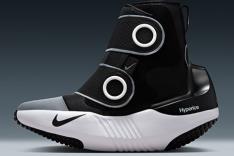
Sprinters are a special breed, whether they're track sprinters like Chris Hoy or road sprinters like Cavendish and Cippolini. Some feel that they're born sprinters or not, and there is a bit of truth to that. However, sprinting is also important to train no matter what your natural racing style, because the truth is that most races end up in small or large groups dashing for the line. What are some ways to improve your sprint to increase your odds of podium placings?
A funny thing happened when I retired from racing after last year's Tour of Utah. I gained 25 pounds in a month. The funny part is that it wasn't fat, it was muscle. As a teen, I was 6-foot and wrestling at 135, and I couldn't gain a pound if my life depended on it. Then I went to college in New York. At the time, there weren't many outdoor exercising options in the city so I hit the gym. I put on 40 pounds of upper-body muscle in just a few months and at 175 pounds, finally started to look like a normal person.
Cut to two years later. I've moved out to Los Angeles to pursue a career in the film industry but I'm quickly sidetracked by the year-round beautiful riding weather and the plethora of great climbs. After a year of steady riding I'm back down to 160 pounds, which is where I spent the remainder of my racing career. The upper body muscle mass never completely went away.
More: Finish Fast: Race Strategy for Sprinting
When I stopped training and my body no longer had to deal with the stress of six-hour rides, my body bounced right back to my college weight, biceps and all. Muscle memory is an incredible thing! One thing is certain—if I ever come back to cycling at any level I won't be coming back as a climber.
So in the back of my mind, I'm thinking that if I were to ever come back to cycling at any level, I would have to reinvent myself as a sprinter. As someone who is eternally fascinated with the body's ability to change and adapt, this idea of transformation appeals to me. So what would it take to go from a rider whose best moments came on day four or five of a hilly stage race to one whose moment comes at the 60-minute mark in a flat criterium?
Not that I have any immediate plans to return to racing (I promise Rachael!), but if I do, this is how I will do it.
More: Improve Your Sprinting Skills
Speed
Sprinting is all about leg speed. If you talk to a track sprinter about cadence, he will call anything below 120 rpm low leg speed training, and that the high rev range starts at 150 rpm. In retrospect, although I did a lot of high spin training when I raced, I could have done more. It is my belief, based on working with hundreds of riders, that most cyclists would see a 10 percent improvement in their all-around cycling performance if they dedicated just 45 minutes per week to over speed training.
This is true for sprinters, time trialists and even climbers. All the strength and endurance in the world doesn't mean much unless you can turn the cranks around quickly. So part of my comeback would include multiple high spin sessions per week and an overall shift in cadence zones. Instead of ranging from 70 rpm to 120 rpm at different points of the season, everything would ratchet up a notch and my zones would start at 90 rpm and go all the way up to 150.
- 1
- of
- 2








Discuss This Article